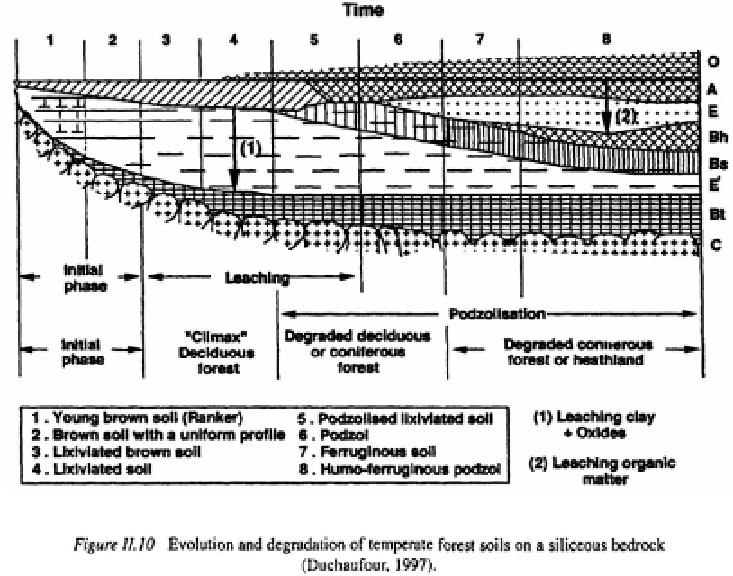Agriculture Reference
In-Depth Information
4.4.1
TEMPERATE CLIMATES
On acid parent materials in the temperate regions, fine particles derived from weathering
mix with newly-accumulated organic matter to form a young 'sol brun' (brown soil)
with an AC profile (Figure II. 10). In cold regions, most soils are too youthful to have had
sufficient time to have evolved further and organic matter may accumulate continuously,
due to the prevailing slow decomposition and mineralisation rates.
However, over time weathering becomes active and cations are leached. At a later
stage, clays, iron oxides and oxyhydroxides are translocated and accumulate in a
Bt horizon (possessing translocated illuviated clays) to form a 'sol brun lessivé' (acid
leached brown soil, or alfisol).
Under even more acid conditions, biological activity gradually changes and closed-
macroaggregate systems are progressively replaced by aggressive-leaching systems.
Epigeic litter-dwelling arthropods become dominant and replace the anecic earthworms
which normally drag litter into their galleries and mix it with the soil. Under such
conditions, Fe and Al complexes are translocated down the profile to form a Bs horizon
that is possessing high concentrations of illuvial materials apparently amorphous under
X-ray examination, comprising carbon, the oxides of Al and perhaps Fe. The A horizon

